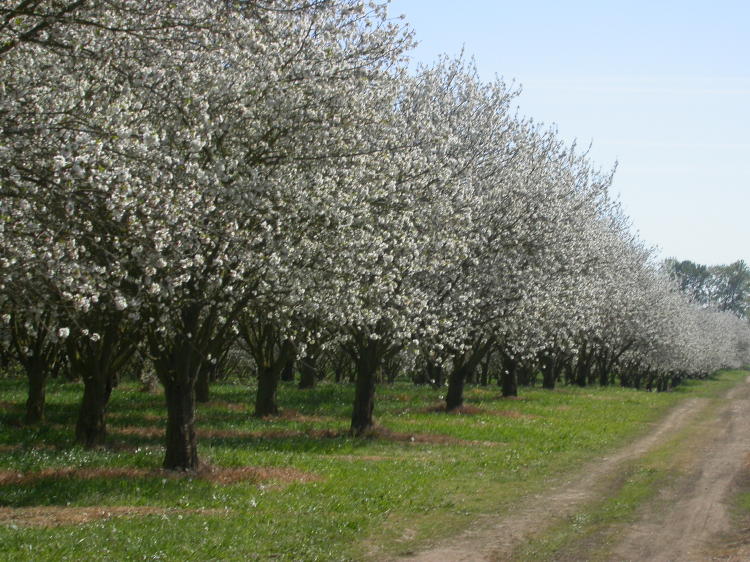Dwarf Cherry Trees – Small in Stature Large in Yield

Many an afternoon could be spent cherry picking on the farms that dot the Niagara escarpment. The stunning floral display matches the delicious flavour, with a multitude of miniature pinkish blossoms and translucent filaments, finishing in rich maroon anthers foretelling the fruit to come.
Most of us are not fortunate enough to have space for a traditional sweet cherry tree that could grow up to 30 feet tall. The solution is the bountiful Dwarf Cherry variety which will provide enough delicious fruit without the larger space requirements, growing only 8-12 feet tall. Canadian plant breeders have created this type of cherry to combine the best traits of both sweet and sour cherries. Flavours abound in these power packed fruits and imagine the awe of your guests as you share the secret of your fabulous cherry pie, organic home grown cherries.
This plant, like so many things in our garden requires patience. They generally will not begin to produce fruit until their third year. Harvest time is from July to late August and the longer the berry remains on the tree the sweeter it is.
At Ridgeview we carry 4 different varieties of Dwarf Cherries each with its own coloured berry; Cupid – dark Red to Black, Juliet – dark Red, Romeo – dark Red to Black, and Valentine – medium Red. Follow the instructions below and be sure to share your favourite recipes on our Facebook page.
- Plant in well-drained soil in a protected area. These varieties are self-pollinating and can stand alone.
- Give a tree approximately 20 ft2 of space.
- Keep the bushes watered until they are established, but reduce or stop watering in the fall to encourage dormancy.
- Fertilizing can be done early in the season, and it is best if based on a soil test. Do not fertilize in late summer or early fall, this encourages late season growth which may reduce winter hardiness.
- Prune these trees in early spring before any signs of new growth. Pruning in late Summer or Fall will encourage late growth that could be damaged over Winter. Pruning in Winter when it is very cold will cause other diseases like Canker to form.
- Although dwarf cherries do not seem to have many pest problems, watch for aphids.
You should note that larger wildlife may browse on the bushes, especially the young plants. It isn’t necessary to cover the bushes with a net as birds don’t seem to find them too appetizing, silly birds!

